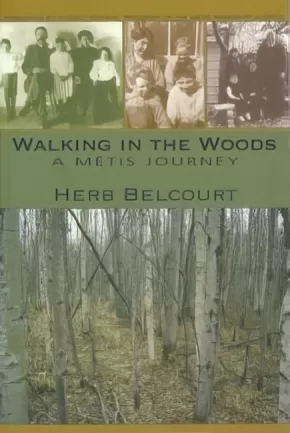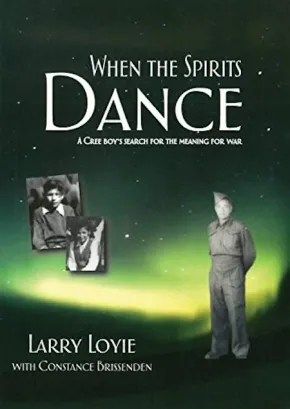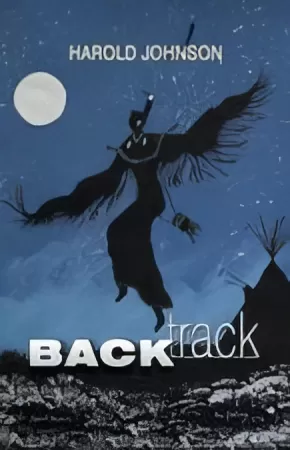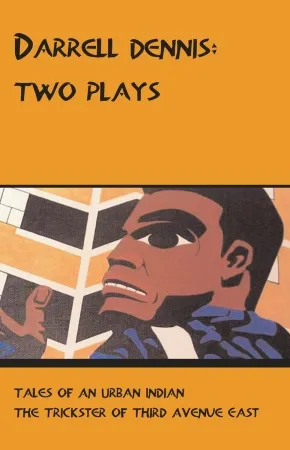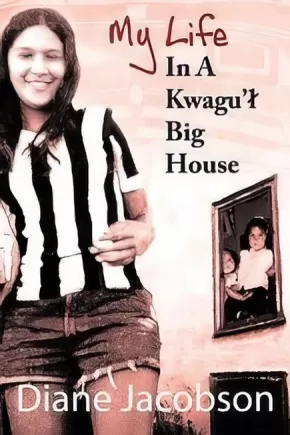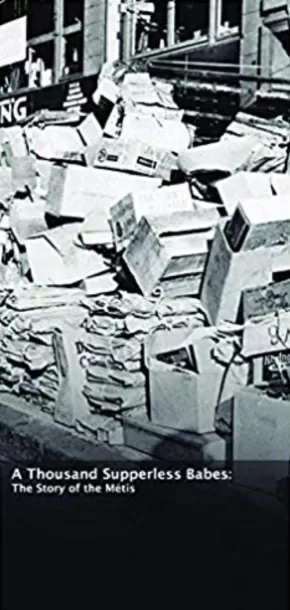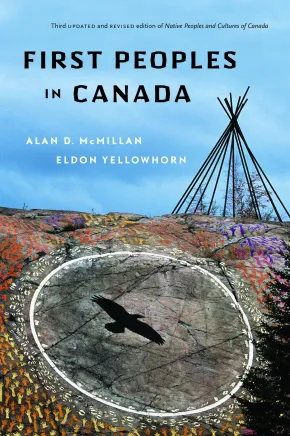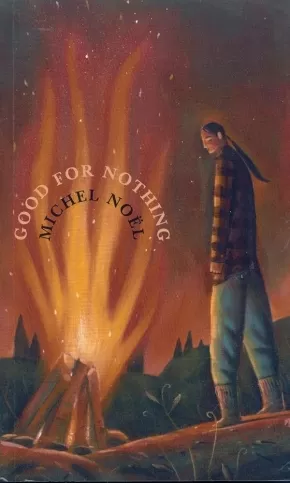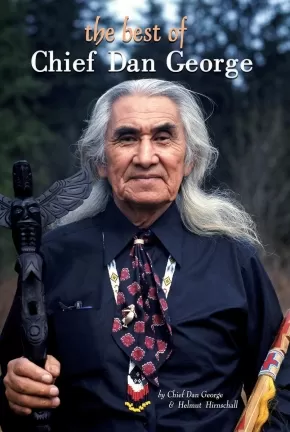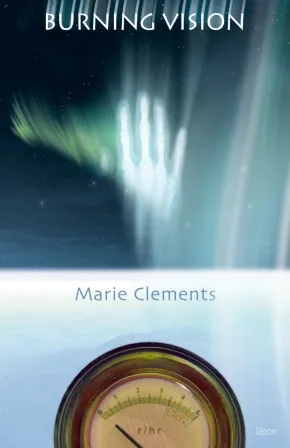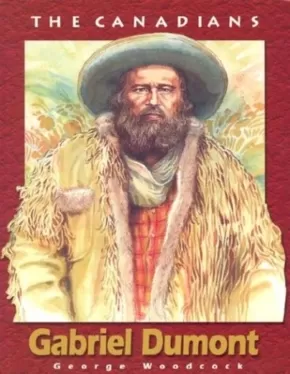Indigenous Peoples in Canada
Synopsis:
Reflecting on his evolving identity as a human being, a Canadian and a Métis westerner, Herb Belcourt tells the remarkable story of one familys enduring connection to the dramatic history of western Canada. Belcourt traces his ancestry directly to an early French-Canadian voyageur and his Cree-Métis wife who lived in Ruperts Land after 1800. The eldest of ten children, Belcourt grew up in a small log home near Lac Ste. Anne during the Depression. His father purchased furs from local First Nations and Métis trappers and, with arduous work, began a family fur trading business that survives to this day. When Belcourt left home at 15 to become a labourer in coal mines and sawmills, his father told him to save his money so he could work for himself. Over the next three decades, Belcourt began a number of small Alberta businesses that prospered and eventually enabled him to make significant contributions to the Métis community in Alberta.
Suggested Grades: 9-12
ABPBC
Synopsis:
When Lawrence's father goes overseas with the Canadian Army during the Second World War, the young Cree boy struggles to grow up while wrestling with the meaning of war. With Papa gone, Mama raises the children alone. Traditional foods like wild meat and fish are scarce and many other foods are rationed. Angry about the changes and confused about the future, Lawrence misses his father and his teachings about their natural way of life. When army runaways threaten the family, Lawrence's courage and knowledge of traditional skills are called upon to keep them safe. With guidance from his grandfather and encouragement from his grandmother, Lawrence faces his challenges, becoming wiser and stronger, and earning the respect of his elders.
Educator & Series Information
Recommended for grades 4 to 9.
This book is part of The Lawrence Series.
Additional Information
44 pages | 7.75" x 10.54"
Synopsis:
Against a backdrop of traditional Cree mythology, Johnson's novel creates a tangled murder chronicle and harrowing tale of four Cree brothers, bound to each other through family and tradition, separated from each other by their chosen life paths. As one brother kills, another reinforces the principle of a circle of life, as one capitulates to weakness, another conquers his demons. Driving the action is a manhunt for the killer of conservation officers; but at the heart of the story there is reparation through cultural wisdom and the restoration of traditional beliefs.
Authentic and well-paced, Back Track crosscuts through the cultural ruts, economic conventions, and stereotypes of Cree families living in northern Saskatchewan.
Additional Information
|
Synopsis:
Tales of an Urban Indian is a one-person play that follows the trials and tribulations of Simon Douglas, a young First Nations man who moves from his rural reservation to the big city of Vancouver. This dark comedy examines the issues of race, identity, and assimilation that drive young Indigenous men to self-destruction.
In The Trickster of Third Avenue East, Roger and Mary are spiralling out of control but are too scared to let each other go. Enter J.C., a mysterious visitor who turns their lives upside down and forces them to confront their darkest secrets. J.C. pushes Roger and Mary into the realm of the supernatural and past the brink of sanity.
Additional Information
134 pages | 5.45" x 8.40" | Paperback
Synopsis:
Passionate and engaging, Howard Adams: OTAPAWY! is an immense contribution to our knowledge of modern Métis political consciousness and activism. In addition to being Howard Adams’ own record of his remarkable life, the book also contains many contributions by those who were touched by him as a friend, colleague, mentor, activist, political leader, teacher, and scholar.
Augmented by an interactive CD-ROM containing dozens of photographs and documents relating to Howard Adams’ life and work.
Educator Information
Grade Level: Secondary/Post Secondary/Adult
Additional Information
310 Pages | Nonfiction
Synopsis:
A mystical novel reflecting a positive view of native life and philosophy, it's about a three-year-old who was taken from his home on an Ojibway reserve and placed in a series of foster homes. Join him as he travels back to the reserve and discovers his sense of place and of self.
When Garnet Raven was three years old, he was taken from his home on an Ojibway Indian reserve and placed in a series of foster homes. Having reached his mid-teens, he escapes at the first available opportunity, only to find himself cast adrift on the streets of the big city.
Having skirted the urban underbelly once too often by age 20, he finds himself thrown in jail. While there, he gets a surprise letter from his long-forgotten native family.
The sudden communication from his past spurs him to return to the reserve following his release from jail. Deciding to stay awhile, his life is changed completely as he comes to discover his sense of place, and of self. While on the reserve, Garnet is initiated into the ways of the Ojibway -- both ancient and modern -- by Keeper, a friend of his grandfather, and last fount of history about his people's ways.
By turns funny, poignant and mystical, Keeper 'n Me reflects a positive view of Native life and philosophy -- as well as casting fresh light on the redemptive power of one's community and traditions.
Educator Information
Grades 10-11 BC English First Peoples resource for the unit How Do We Define Ourselves?
Additional Information
320 pages | 5.19" x 7.98" | This edition published in 2018
Synopsis:
When Will returns to Medicine River, he thinks he is simply attending his mother's funeral. He doesn't count on Harlen Bigbear and his unique brand of community planning. Harlen tries to sell Will on the idea of returning to Medicine River to open shop as the town's only Native photographer. Somehow, that's exactly what happens.
Through Will's gentle and humorous narrative, we come to know Medicine River, a small Albertan town bordering a Blackfoot reserve. And we meet its people: the basketball team; Louise Heavyman and her daughter, South Wing; Martha Oldcrow, the marriage doctor; Joe Bigbear, Harlen's world-travelling, storytelling brother; Bertha Morley, who has a short fling with a Calgary dating service; and David Plume, who went to Wounded Knee. At the centre of it all is Harlen, advising and pestering, annoying and entertaining, gossiping and benevolently interfering in the lives of his friends and neighbours.
Educator Information
Recommended Grades: 10-11
Grade 10/11 English First Peoples resource included in the unit Relationships - Families, Friendships, Communities, and the Land.
Additional Information
320 pages | 5.31" x 8.25"
Synopsis:
"'Wheee!!' Honey's cousin Phillip Boy was roaring with delight as they whizzed down the stairs on their homemade iron surfboard. Honey could only close her eyes when she saw Grandma Axu at the bottom of the staircase..."
Honey Jacobson considered herself lucky to live in the last semi-traditional Big House of the Kwagu'l people: a four-story home filled with a loving, extended family of cousins, uncles, aunts and the heads of the household, Grandpa Moses and Granny Axu. While new smaller houses were spreading throughout her community, Honey really knew only her relatives inside that Big House.
Capturing the fancy of Honey's community and family, the 1960s saw a Kwagu'l family inevitably changed by Western culture's spell. This is Honey's story.
Additional Information
191 pages | 6.00" x 9.00"
Synopsis:
A Thousand Supperless Babes: The Story of the Métis is a theatrical play and interactive Compact Disc compilation, revealing the history of the Métis through story, song and dance. Set in New York City, far from the Métis homeland, A Thousand Supperless Babes tells a poignant history of a Nation, unfolding using the stories and experiences of Métis individuals and the reminiscences of Honore Jaxon, one of Louis Riel's secretaries. Through the use of cast monologues, this play promotes and preserves the tradition of Métis storytelling, as monologues have been created using stories of Métis history told to cast members by their ancestors. The compilation includes the play's script in both printed and electronic formats and an electronic Flash Presentation of historical images to be used throughout the performance. The compact disc also includes the musical score, performed by singer/songwriters Andrea Menard and Don Freed, accompanying sheet music, and other information that can be used by teachers and drama instructors to produce and perform A Thousand Supperless Babes: The Story of the Métis. Depending upon the theatre group or drama class, the script can easily be modified to include new stories based on cast member's family stories or other significant events in Métis history.
Grade Level: Middle Years/Secondary/Post Secondary/Adult
Synopsis:
Since Native Peoples and Cultures of Canada was first published in 1988, its two editions have sold some 30,000 copies, and it is widely used as the basic text in colleges and universities across the country.
Now retitled, this comprehensive book still provides an overview of all the Aboriginal groups in Canada. Incorporating the latest research in anthropology, archaeology, ethnography and history, this new edition describes traditional ways of life, traces cultural changes that resulted from contacts with the Europeans, and examines the controversial issues of land claims and self-government that now affect Aboriginal societies.
Most importantly, this generously illustrated edition incorporates a Nativist perspective in the analysis of Aboriginal cultures.
Additional Information
400 pages | 6.00" x 9.00" | Paperback
Synopsis:
The year is 1959, and fifteen-year-old Nipishish returns to his Métis reserve in northern Quebec after being kicked out of residential school, where the principal tells him he's a good-for-nothing who, like all Indians, can look forward to a life of drunkenness, prison and despair.
The reserve, however, offers nothing to Nipishish. He feels even more isolated here. He remembers little of his late mother and father. In fact, he seems to know less about himself than the people at the band office. He must try to rediscover the old ways, face the officials who find him a threat, and learn the truth about his father's death.
Adolescents will find inspiration in his courage to reclaim his identity and claim his rightful place on the reserve. The book also provides great insight into the roots of many ongoing Indigenous issues.
Awards
- Winner of the Geoffrey Bilson Award for Historical Fiction
Educator Information
Recommended Ages: 12-15.
Curriculum Connections: Indigenous Studies, History, Geography, Social Sciences, English
Additional Information
256 pages | 4.25" x 7.00" | Written by Michel Noel. Translated by Shelley Tanaka.
Synopsis:
The Best of Chief Dan George is a deeply moving collection that brings together the wisdom, poetry, and philosophy of a distinguished Tsleil-Waututh chief, and one of the most beloved Indigenous voices of the 20th century. Combining the bestselling works My Heart Soars and My Spirit Soars, this volume captures Chief Dan George’s profound reflections on nature, identity, love, and the struggles of Indigenous peoples.
Through his words, Chief Dan George shares timeless truths that inspire reverence for the land, respect for all cultures, and hope for a more just world.
Perfect for readers seeking wisdom, inspiration, and a deeper understanding of Indigenous perspectives, The Best of Chief Dan George is a must-have for those who cherish poetic storytelling and heartfelt reflection.
Additional Information
128 pages | 5.50" x 8.50"
Synopsis:
Marie Clements’s play sears a dramatic swath through the reactionary identity politics of race, gender and class, using the penetrating yellow-white light, the false sun of uranium and radium, derived from a coal black rock known as pitchblende, as a metaphor for the invisible, malignant evils everywhere poisoning our relationship to the earth and to each other.
Burning Vision unmasks both the great lies of the imperialist power-elite (telling the miners they are digging for a substance to “cure cancer” while secretly using it to build the atomic bombs that devastated Hiroshima and Nagasaki); and the seemingly small rationalizations and accommodations people of all cultures construct to make their personal circumstances yield the greatest benefit to themselves for the least amount of effort or change on their part. It is also a scathing attack on the “public apology” as yet another mask, as a manipulative device, which always seeks to conceal the maintenance and furtherance of the self-interest of its wearer.
Clements’s powerful visual sets and soundscapes contain curtains of flames which at times assume the bodies of a chorus passing its remote judgment, devoid of both pity and fear, on the action: a merciless indictment of the cross-cultural, buried worm of avarice and self-interest hidden within the terrorism of the push to “go with the times,” to accept the iconography of a reality defined, contextualized and illuminated by others.
Marie Clements writes, or, perhaps more accurately, composes, with an urbane, incisive and sophisticated intellect deeply rooted in the particulars of her place, time and history.
Cast of five women and 12 men.
Reviews
“Clements covers a lot of ground, but she knows her territory and travels it deftly… Clements dips her pen in numerous cross-cultural references, from cherry trees to caribou to Hank Williams, and writes with a magical irreverence that highlights this tragic saga. Her rich poetic style evokes parallels between Japanese and native myths – not unlike Yeats’ Noh Plays where Celtic and Japanese myths meld – finding connection through ancient truths and the power of the soil, except in this case the soil is literally explosive.”– Quill & Quire
"I remember reading this play in my undergrad and being shocked and impressed at how much theatre could do and be. This was a far cry from the kitchen sink dramas I had already (naively) decided formed the bulk of contemporary Canadian theatre. Far from the confines of the kitchen, Burning Vision travels across the globe and through time, offering a complex portrait of interconnectedness, shared trauma, and shared responsibility for healing. Fifteen years after it premiered in Vancouver and the subject matter is still, sadly, “of the moment” as we wrestle with climate change and isolationist politics. Requiring a diverse cast to fill parts such as the Dene Seer and Tokyo Rose, and requiring a flexible space so it can be staged in the round, there is no doubt that this play can be challenging. But it is challenging in the best sense of the term, in that it is full of possibilities and invites creative minds in to tackle the important challenges of our day. - Lisa, from PledgeProject
Additional Information
128 pages | 5.50" x 8.50" | Paperback
Synopsis:
Celebrated Ojibway author Richard Wagamese shares the traditions and teachings of his people, entwining them with an account of his own life-long struggle for self-knowledge and self-respect.
Richard Wagamese stares the modern world in the eye and takes careful note of its snares and perils. He sees people coveting without knowing why, people looking for roots without understanding what might constitute rootedness, people looking for acceptance without offering reciprocal respect, and people longing for love without knowing how to offer it. And underneath all lurks the seductive oblivion of substance abuse. These are the pitfalls of his own life, dangers he hopes his estranged son, Joshua, will be able to navigate with the guidance afforded by this heartfelt memoir.
Richard Wagamese has no easy answers. His road to self-knowledge has been long and treacherous -- and it is in part this series of trials that has furnished him if not with a complete set of answers then at least a profound understanding of the questions. Again and again Wagamese brings universal problems into astonishingly sharp focus by sharing the special wisdom of Canada’s First Nations, while reminding us that we are not so different after all.
Additional Information
|
Synopsis:
Born in St. Boniface in 1837 of French and Indian parentage, Gabriel Dumont's childhood was spent in the Saskatchewan country, where he grew accustomed to the semi-nomadic existence of the Métis. These were the proud days of the Métis nation, when its people roamed freely throughout the Prairies. The most stable social institution was the annual buffalo hunt with its rules. When Gabriel Dumont became head of the Great Saskatchewan Hunt in 1862 the end of the nomadic lifestyle was already in sight.
As the buffalo herds dwindled, the Métis began to form more permanent settlements, but were alarmed when their pleas for recognition of their land rights were ignored by Sir John A Macdonald's government. Dumont appealed to Louis Riel, leader of the Red River Rebellion.
Riel spoke up for the Saskatchewan Métis, but their petitions were ignored. In 1885, the Métis took up arms against the government forces. Dumont spurred the outnumbered rebels to several victories. After the Métis defeat, Dumont fled to the United States where he spent time with Buffalo Bill's Wild West Show until an amnesty was declared and he was able to return to his home.
Educator & Series Information
This book is part of The Canadians Series.
Recommended Ages: 10-13
Additional Information
64 pages | 6.50" x 8.50"

